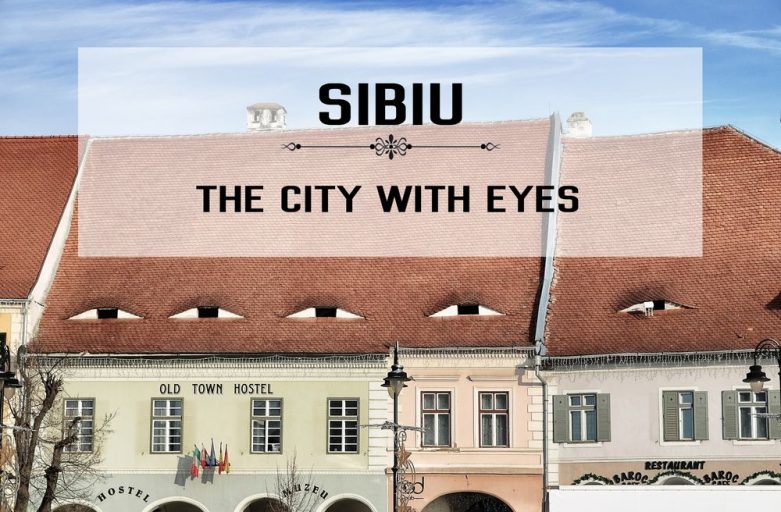Located in the middle of the Transylvania region in Romania, Sibiu is a medieval city that has so much to offer on a cultural level. Sibiu has a large German population, which is why the city also has a second German name – Hermannstadt. Although it has been a popular destination for a long time now, it really rose to fame after it held the title of European Cultural Capital in 2007, along with Luxembourg, another city that I’m in love with. Years have passed and Sibiu not only kept its reputation as a cultural hub but even consolidated it by being the city host of several national or international fashion, food, sport or art festivals. No matter how the city will lure you to wander on its cobbled streets, you will soon discover all the other things that are great about it – and that’s mainly its history, food, and peculiar architecture – the houses with eyes on the roof.
What can you expect?
Sibiu is a perfect weekend destination, because in 2-3 days you can see the major attractions without being too rushed. Because it is one of most important cities in Romania, visitors have multiple ways to reach it: by car, bus, train. You can even fly easily to Sibiu, because it has its own airport, just 3km outside the city.
Not sure what time of the year it would be best to visit? Simple. If the budget is not a problem, go for the summer months. The weather is warm, yet confortable and almost all major cultural events are taking place around this time, so you will always have options for spending your time. In the summer, the city will be swarming with tourists, and although that may be a no-no for some, for me it never felt like a problem, on the contrary, I think the crowds only add to the city’s charm. And when there is a great number of tourists, there are of course, higher prices associated with accomodation. During certain events you may find yourself unable to find ANYTHING vacant, and I walked in those shoes once while being in Sibiu. But that’s a story for another time.
How to get there?
By train – If you want to get from Bucharest to Sibiu by train, your trip can take between 5h 15 min and 8h 45 min, depending on the type of train you choose. If you’re coming from any other parts of the country, check your options on the official CFR website. Also, depending on the time of year you are traveling, you might experience a delay, so make sure you take this into consideration.
By car – Because Sibiu is located in the center of Romania, you can get there from basically anywhere. There are three main roads crossing Sibiu. First one is European Route E68, which is linking Hungary and Romania, from Szeged to Brasov. The second is the national road DN14, linking Sighisoara to Sibiu. The third is another European route (E81), starting in Constanta and ending in Mukachevo (Ukraine). From Bucharest it takes 4 to 5 hours to get to Sibiu in normal traffic conditions.
By plane – Sibiu has its own international airport, located just 3km outside the city. It has airline routes to and from London, Munich, Frankfurt, Antalya and many more locations.
Let’s get started with what Sibiu has to offer if you choose it as your next destination!
The Big Square (Piata Mare)
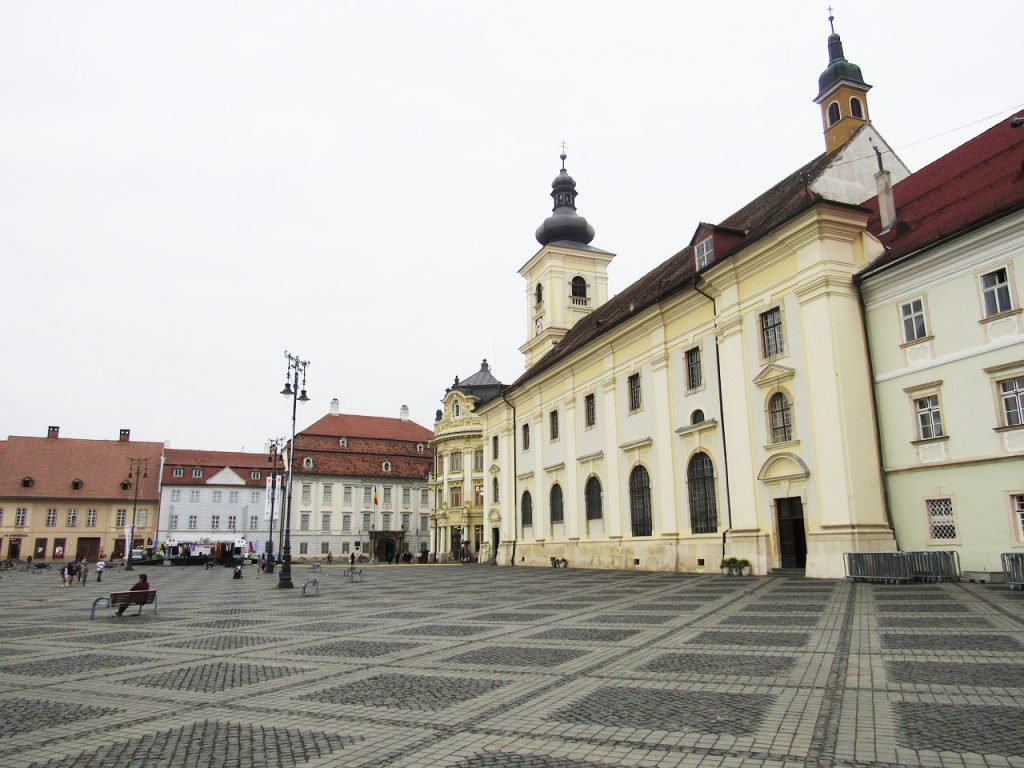
The Big Square is part of the Old Town and is considered the city’s most central point. While taking a tour around it, you will discover important attractions: Brukenthal Art Museum, The Blue House, The Catholic Church, and The Haller House.
Brukenthal Art Museum, also known as Brukenthal Palace, is definitely not to miss. Its name is given after its founder, Samuel von Brukenthal, who was a wealthy Baron and an important figure of the local society in the 18th century. The museum houses his impressive art, stamps, and numismatics collection, which got only bigger over time.
The Blue House is easy to notice because, well… It’s all blue. Although it dates back to the 15th century, nowadays it doesn’t have many of its original elements. On the facade, at the attic level, you can see a triangle containing the blazon of the city.
The Catholic Church was built in the Viennese Baroque architectural style. It is rather simple looking on the exterior, but has a beautifully decorated interior. You can visit it free of charge. Depending on the day and hour of the visit, you can witness a service in either Romanian, German or Hungarian language.
The Small Square (Piata Mica)
Defense walls, towers, cobbled streets, houses with eyes on the roof and a bridge that threatens to collapse if someone says a lie while being on it.
The square is dominated by The Council Tower, which is seven stories high. It was mentioned for the first time in historical documents in 1324 and over the many centuries of its existence it underwent changes, renovations and expansions. Even so, you can still see elements of the initial building on the southern wall of the tower, where there are two stone lions, carved in relief. The tower is open for the general public and one of the things that can be observed inside is the mechanism of its clock.
Next thing on the list is The Bridge of Lies – one of the most notable landmarks of the city. This was the first bridge made of forged iron not only in Romania, but also in south-east Europe. Under the bridge you can easily spot Sibiu’s coat of arms on one side – for obvious reasons – and the inscriptions “1858” and “Friedrich Hütte” – which represent its construction year and the firm that made it. The bridge had a different design than other bridges built before, meaning that it didn’t have supporting pillars. Therefore, the locals started calling it “the lying bridge”. In German, the words “lying” and “lie” are homonymous and shortly the bridge became known as the Bridge of Lies. The name created a lot of urban legends around it, the most common stating that if anyone will tell a lie while standing on the bridge, it was going to collapse. Would you put this legend to a test?

House of Arts is a building dating back to 1370. Like the name suggests, it hosts various temporary art exhibitions throughout the year. It can be easily spotted due to a string of eight arcades, going across the entire facade, along with a pietonal passageway.
Next stop is a rather new building – at least in comparison to the others around it – Hermes House. The name refers to the Greek god of trade, symbolising the vital role that the Small Square had in the commercial and economic life of the city, by being the place where various products were sold or traded. Since 1990, it has housed The Franz Binder Museum of Universal Ethnography, where items are gathered from all over the world, like Asia and South America.
The last attraction in this mini tour of the square is the Fresco Hall. This hall is part of a building from the 15th century. On the ceiling there is a stucco coat of arms, but the walls are truly incredible, with partially preserved mural paintings from 1631, representing biblical and allegorical scenes.
Walk of Fame
The Walk of Fame is a fairly new landmark, but it’s gaining popularity fast. Located in Cetății Park, this alley is filled with stars (literally and figuratively) cast in the pavement. You are probably thinking if it is somehow similar to Hollywood’s Walk of Fame and the answer is yes, but this one is special because it gives recognition to different personalities linked to the city’s cultural life.
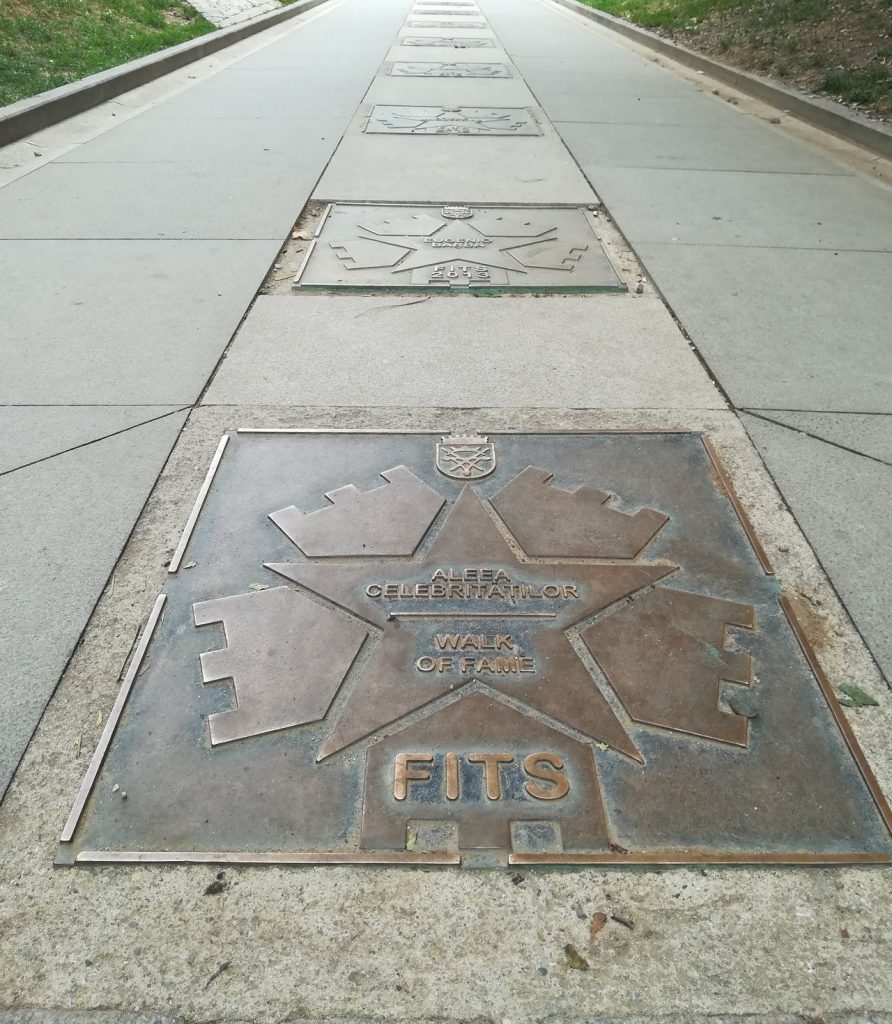
City Wall and Defense Towers
Being an important city in the medieval times, Sibiu obviously had defense systems that kept the meddling intruders at a fair distance. Even today, part of the old fortifications are still standing strong, in the form of defense walls and towers. To see it all in one go, take a walk on Fortress Street (Romanian: Strada Cetatii), also known among the locals as “the most beautiful street in Sibiu”. Centuries of history will unfold before your eyes. The most notable sightings are definitely going to be the towers, each stop having its own story and particularities.
For example, the Carpenters Tower was always the most impressive for me, because of its unique structure, well maintained but also recently renovated. It was constructed in the 14th century by the carpenters’ guild, hence the name. During the communist regime it was used as a recurrent backdrop in many propaganda films.
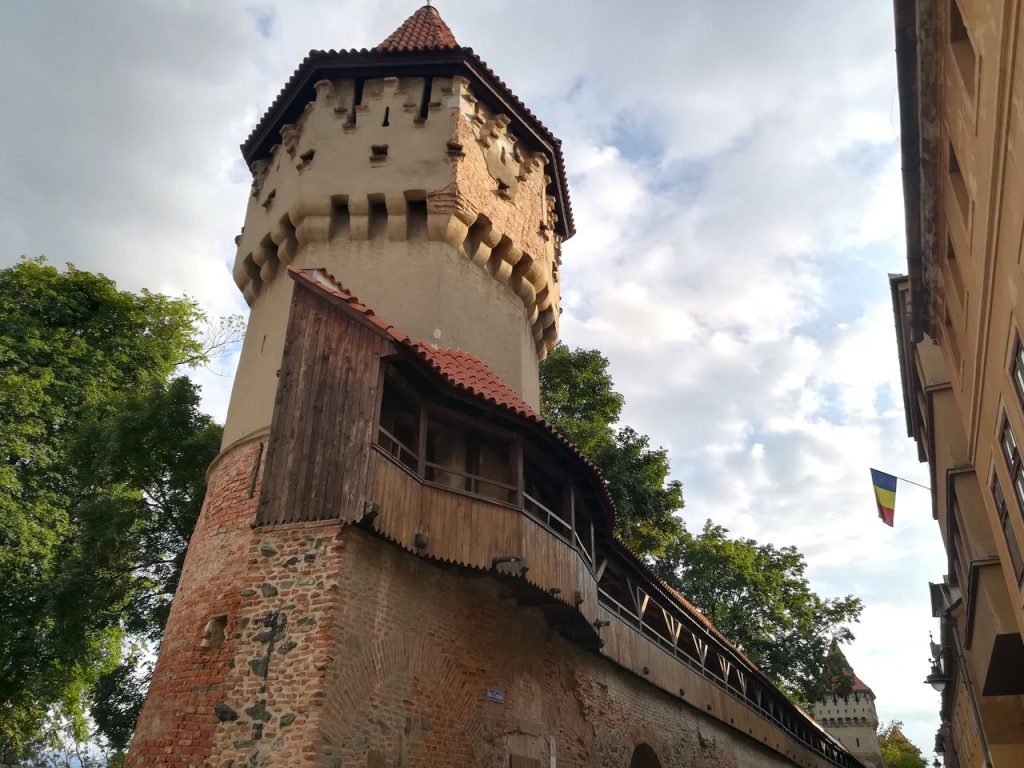
Down the road you will find Potters Tower, which was made by the Potters guild. The third tower is the Harquebusiers Tower, with its name coming from the ramparts that served as holes to fire the harquebus (an early model of gun).
The Lutheran Cathedral of Saint Mary
The Lutheran Cathedral is one of the biggest and most impressive Gothic churches in Romania. Its construction dates back to the 14th century. Samuel von Brukenthal is buried in this church’s crypt. An interesting fact is that back in the Middle Ages, the four turrets on top of the steeple were a sign that the death penalty was practiced in the city.
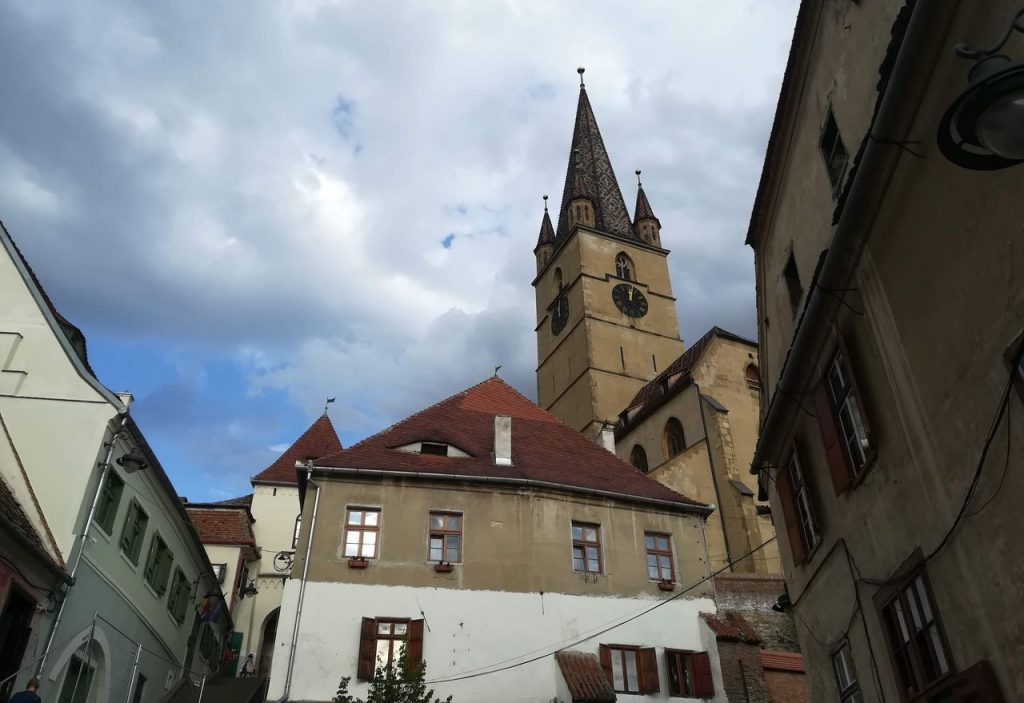
ASTRA Open Air Museum
Located just outside the city, in a peaceful forest setting, ASTRA Open Air Museum exhibits traditional Romanian households, old mechanical structures used to facilitate various processes (like grinding cereal grain with water mills or wind mills), animal caretaking facilities, instruments and techniques, traditional means of transportation, decorations with folkloric motifs, etc. If you plan on seeing everything the museum has to offer, I suggest you reserve a whole day for it, because the visiting circuit is ten kilometres long. Another cool thing about ASTRA is that it is open all year around and even at night. I haven’t been there at night yet, but it’s definitely on my list.
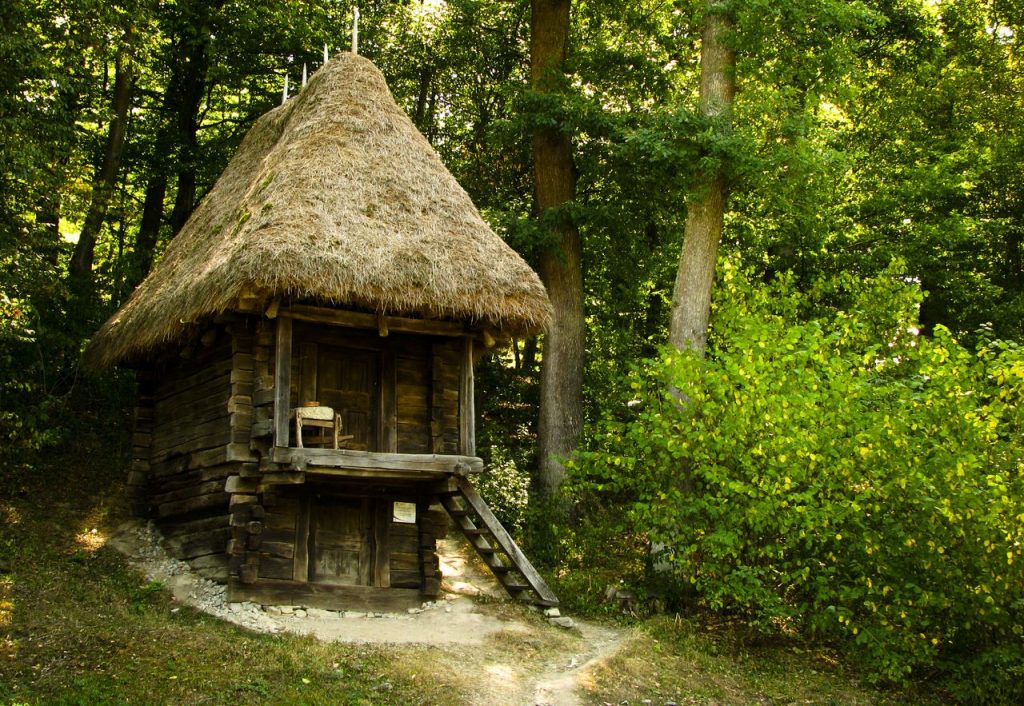
Don’t fool yourself thinking this is all Sibiu has to offer to its visitors. No, no, no! The entire old part of the city is filled with hidden gems, expressed by art, history and traditions. The cobblestone streets, the roofs with eyed shaped dormers and “secret” passageways making labyrinths through the city, but masked by massive wooden gates. This is definitely a city that must be discovered by foot, one street at a time.
